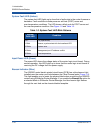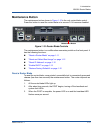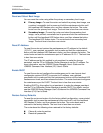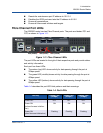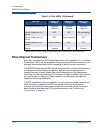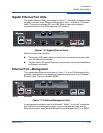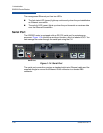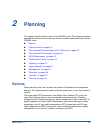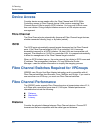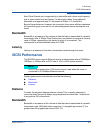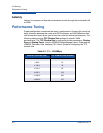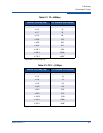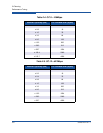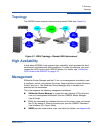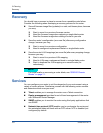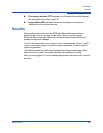
2–Planning
Device Access
2-2 ISR651101-00 J
Device Access
Consider device access needs within the Fibre Channel and iSCSI SANs.
Controlling access to Fibre Channel device LUNs requires mapping Fibre
Channel device LUNs to specific iSCSI initiators. You may map LUNs to more
than one initiator. Giving multiple initiators access to a LUN requires access
management.
Fibre Channel
The Fibre Channel ports automatically discover all Fibre Channel target devices,
whether connected directly (loop) or by fabric (switch).
iSCSI
The iSCSI ports automatically present targets discovered on the Fibre Channel
ports. If the Fibre Channel target’s LUN 0 is a controller LUN, it becomes
accessible (mapped) to all iSCSI initiators. All data LUNs are inaccessible until
mapped. The exception is if LUN 0 is a controller LUN, it is mapped automatically
to allow for management of the Fibre Channel target controller.
When an iSCSI initiator logs on, the router records the initiator’s iSCSI name and
IP address. The management interface—CLI and SANsurfer Router
Manager—uses the initiator information to simplify the mapping process.
Fibre Channel Switches Required for VPGroups
iSR6200 uses QLogic Host Bus Adapter technology and is compatible with all
Fibre Channel switches from Brocade, Cisco, McData, and QLogic. If you want to
use more than one VPGroup, you must use Fibre Channel switches.
Fibre Channel Performance
The iSR6200 router supports Fibre Channel service at transmission rates of 2, 4,
or 8 Gbps with a maximum frame size of 2,148 bytes. Related performance
characteristics include the following:
Distance
Bandwidth
Latency
Distance
Consider the physical distance between Fibre Channel devices. Choose SFP
transceivers that are compatible with the cable type and distance.



